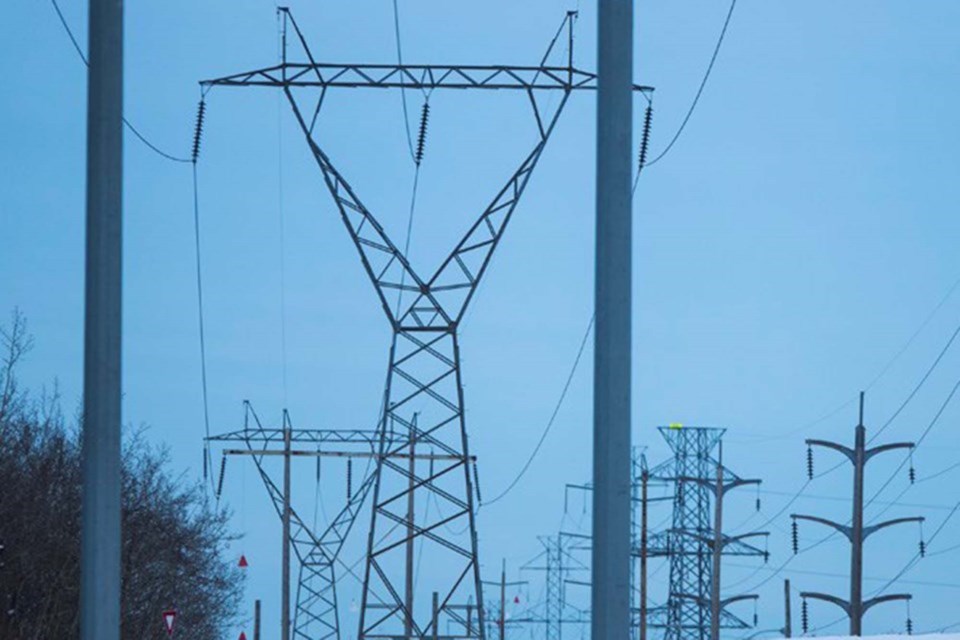Low supply, soaring demand, and reduced competitiveness are to blame for the jolt Albertans are seeing on their electricity bills, says a local economist.
Through the summer and into September, Alberta consumers are seeing a record-breaking spike in their electricity prices, said Blake Shaffer, electricity market economist at the University of Alberta.
“It's not just sort of expensive, these are record prices,” Shaffer said.
On Sept. 14, electricity rates set a new daily high record of 75 cents per kilowatt hour, which surpasses any previous electricity rates seen in Alberta and tops the daily average record set in late 2021. These prices came after months of electricity rates topping 20 cents per kilowatt hour, which is a high rate in the province.
The high prices are going to continue to stay high, Shaffer said, with daily rates expected to sit at 20 cents per kilowatt hour through the winter, compared to the average over the past 20 years of five to eight cents per kilowatt hour.
The spike in rates will be seen in the energy component of an electricity bill, which makes up one-third of the cost consumers pay. The remaining two-thirds are taken up by delivery costs and local fees and taxes. With prices for energy increasing three- to four-fold, consumers may see their bills double in cost, Shaffer said.
Rates are skyrocketing because of a decrease in the supply of electricity on the market, said the expert.
In mid-September, when electricity prices set their daily high, there were low wind conditions in the province, Shaffer said. The province has been adding more wind capacity for electricity in Alberta, but because there was barely a breeze blowing, the wind wasn’t generating power.
Although the price of natural gas is soaring in other parts of the world, the price of natural gas is low in Alberta currently, due to constraints with moving the product around the province, resulting in a reduced ability to generate power from gas, Shaffer said.
Because power plants can’t get enough fuel, or due to being down for maintenance, their ability to generate power for the province has been reduced. The electricity Alberta is importing from other provinces has plummeted recently, too, especially on the days with record-breaking high electricity costs.
While supply is diminishing, demand for electricity is also surging. The economy is booming in Alberta currently, and oil production is at a high.
“Really, energy-intensive aspects of the economy are really booming. The oil production is at record [levels] right now,” Shaffer said.
Oil companies generally produce their own electricity with their own plants built to power their operations, but often they build facilities that produce more electricity than they need and export the additional power to the grid.
But Shaffer said because oil production is picking up, the facilities are using all the power they produce and not exporting any excess to the grid.
Reduced competition in the province is also causing the prices for power to surge, Shaffer said.
In 2000, Alberta wanted to create a more competitive electricity market, as there were only three companies providing 90 per cent of the electricity. The province gave power purchase agreements to two more companies, so there were main five organizations electrifying the grid in Alberta. But in 2020 those purchase agreements expired, Shaffer said, and there are now only three companies providing electricity again.
“That means we've got a reversion back to less competition in the market, so we have three firms that have the majority of the generation, and that leads to higher prices,” Shaffer said.
The expert expects rates to stay high until mid-2023, when some new large natural gas plants are set to produce electricity for the grid, increasing supply and dropping prices for consumers.
But until then, Shaffer recommends consumers get on a fixed-rate electricity bill, which can save Albertans $70 to $100 per month. When rates drop next year consumers can switch back to a floating rate, but in the meantime they can likely save quite a bit, Shaffer said.
“Fixed rates are well, well, well below anything close to the floating right now. So, while they've gone up a little bit, they're not extremely high,” Shaffer said.



